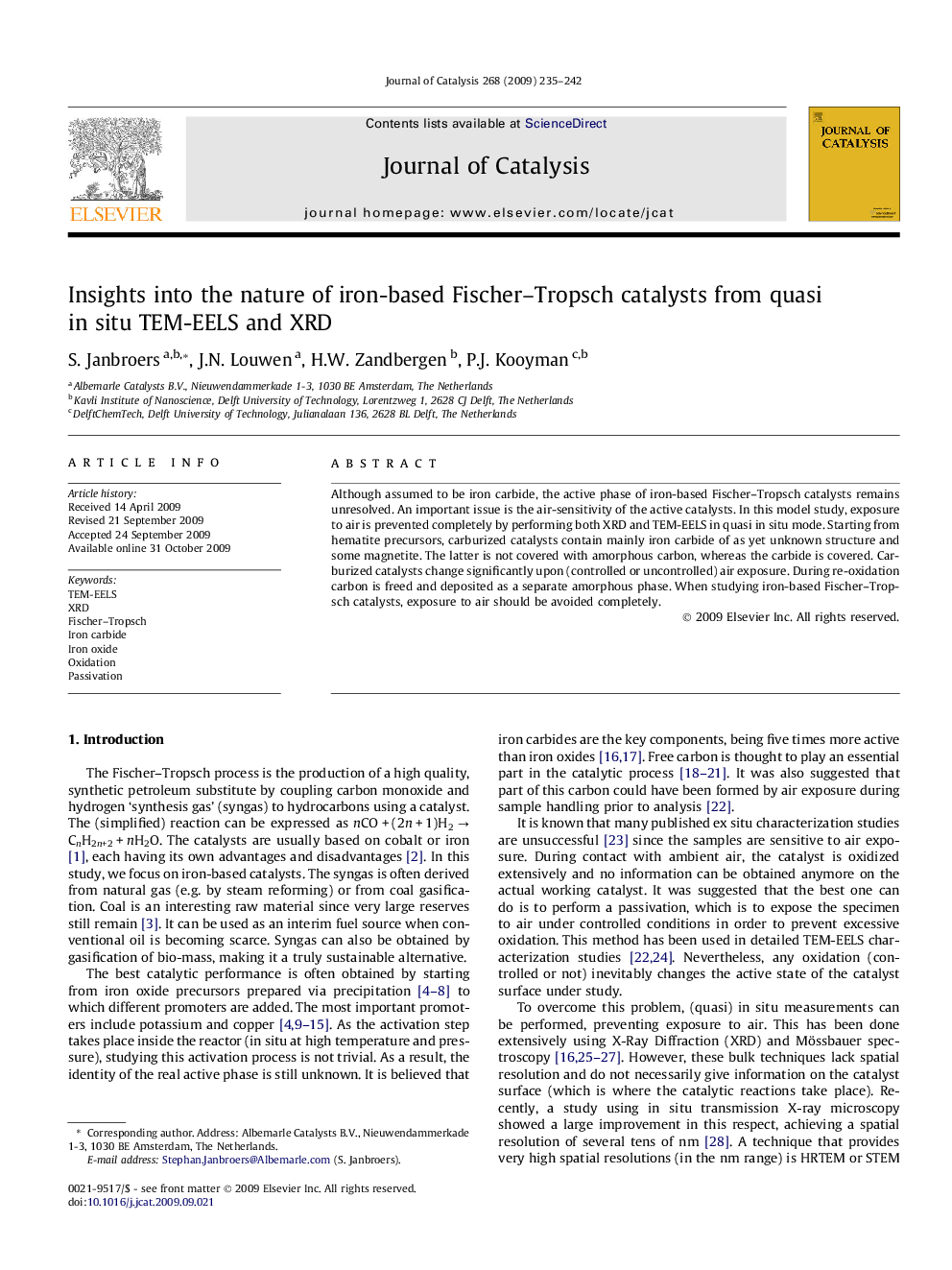| Article ID | Journal | Published Year | Pages | File Type |
|---|---|---|---|---|
| 61964 | Journal of Catalysis | 2009 | 8 Pages |
Although assumed to be iron carbide, the active phase of iron-based Fischer–Tropsch catalysts remains unresolved. An important issue is the air-sensitivity of the active catalysts. In this model study, exposure to air is prevented completely by performing both XRD and TEM-EELS in quasi in situ mode. Starting from hematite precursors, carburized catalysts contain mainly iron carbide of as yet unknown structure and some magnetite. The latter is not covered with amorphous carbon, whereas the carbide is covered. Carburized catalysts change significantly upon (controlled or uncontrolled) air exposure. During re-oxidation carbon is freed and deposited as a separate amorphous phase. When studying iron-based Fischer–Tropsch catalysts, exposure to air should be avoided completely.
Graphical abstractAn important issue in iron-based Fischer–Tropsch catalysts is its air-sensitivity. Using both XRD and TEM-EELS in quasi in situ mode, we found that carbon is freed from iron carbides during exposure to air and deposited as a separate amorphous phase. When studying these catalysts, exposure to air should be avoided completely.Figure optionsDownload full-size imageDownload high-quality image (102 K)Download as PowerPoint slide
